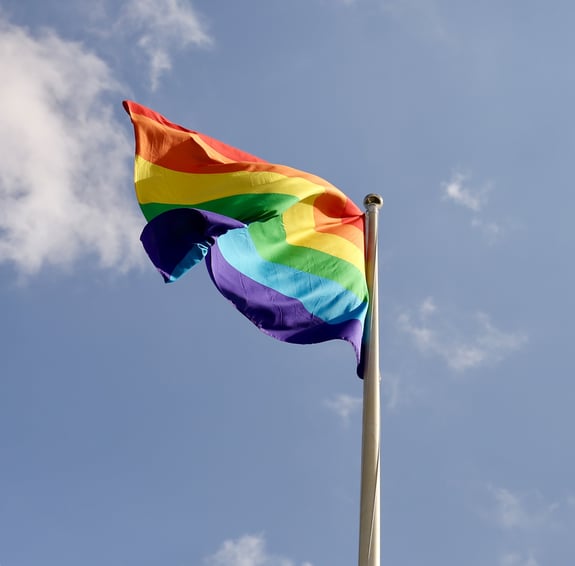There’s been exceptionally hot contention around what brands choose to do and not do during Pride Month each year as of late, and the coals have only been stoked as the political and cultural climate continues to evolve in the U.S.
We tend to focus on the omissions, missteps, and bandwagoning that happens as the turning of the rainbow logos commences and consumers ardently defend or scrutinize companies for their advertising tactics.
The dialogue can get muddled and toxic in a snap when we harp on the wrongs, but brands continue to traverse this slippery plane.
Selecting your messaging
Media is media, and more than anything, we’re predisposed to search for ourselves in the mix. It’s why our favorite TV shows resonate, it’s why we seek out content from creators who feel like peers, and it’s how we decide where to take our business too.
When you encounter an ad in which someone shares your identifying characteristics or belongs to the same groups as you, do you feel seen? Does it increase your affinity for that brand?
One study of 3,000 LGBTQ+ individuals across the U.S. found that 61% said they had an increased likelihood of buying from brands that positively depicted LGBTQ+ individuals in their advertising.
That’s why—when executed authentically—these messaging elements can be potently influential. Authenticity is a subjective term, though, and today’s consumers have developed a keen sense of smell for performative displays of representation and activism.
Keeping track to keep up
If your brand is inclined to progressive LGBTQ+ representation in its advertising, you may find it prudent to conduct your own analysis and get a sense of how you can make a positive contribution.
As an ad intelligence platform, we provide a comprehensive scope of spend, occurrence, and creative data. Ads are tagged with metadata, including a short description of the creative, making it easy to locate them through keyword search.
In addition, you can utilize filters like Message Elements and Multicultural Media to select terms like “Social Equality/Awareness” or "LGBTQ+.”
This enables teams to understand the overall creative and spend activity of advertisers on media channels aligned with certain topics or target demographics.
Creative Cloud reporting identifies common messaging elements within a single campaign, or across multiple players in the industry, so you can get a visualization of the positioning of ads with subjects like “Pride.”
Lastly, the daily spend and occurrence tracker allows you to monitor the activity of a brand, industry, or message over a timespan, letting you understand the most competitive days within a year.
Key players
Sourcing through the Vivvix platform, let’s take a look at some examples of ad creatives and spend thus far in 2023.
Source: Vivvix
Marc Jacobs leveraged their brand—and the designer’s group in the ballroom drag scene, “House of Marc Jacobs”—to promote expression, acceptance, and the power of community. It’s a love letter to that drag community, as well as a reminder that Marc Jacobs is heavily associated with it.
Source: Vivvix
Though it was a collaboration with Queerty, this Nissan commercial was not actually about being gay. While the star announced audaciously that he identifies as such to kick the ad off, the rest of the ad is about his ambition to make the things around him better and more beautiful (i.e. by purchasing a Nissan). The juxtaposition of that declaration with the narrative that followed emphasized that the company is a proponent of normalizing openness about sexuality.
The platform also includes a vast spectrum of spend data, presenting the clearest picture of which brands have been investing in advertising across LGBTQ+-targeted media.
When it comes to spend, we examined a cross-channel view of nine media properties dedicated to the LGBTQ+ audience and found advertisers spent around $40.8M in this arena from Q2 2022 to Q1 2023.
Capital One came in at just about $740K—backing their lengthy history of support for LGBTQ+ causes. Not only does the bank partner with community organizations focused on LGBTQ+ populations like GLAAD, but they were one of the first major companies to offer same-sex marriage benefits in 1997.
Known for launching “Inside Out”—a web series amplifying participants’ coming-out stories—Lexus was another advertiser that came in near the top of the list with around $340K in spend.
The luxury auto brand was still outspent by Cadillac, which has been affiliated with Pride Month activities, as they dedicated nearly $720K to LGBTQ+ properties.
More than a month
As Pride Month comes to a close, you may consider reviewing recent creative messaging and ad placement to see how others participated over the last month.
Brands come across as more authentic when they uphold this commitment all year long. Authenticity will be rewarded, and consistently inclusive representation is one place to start.

